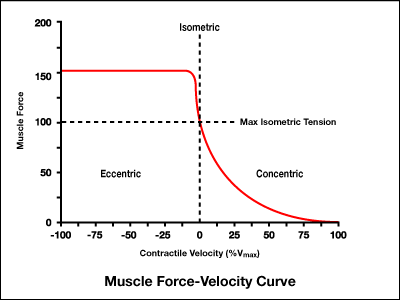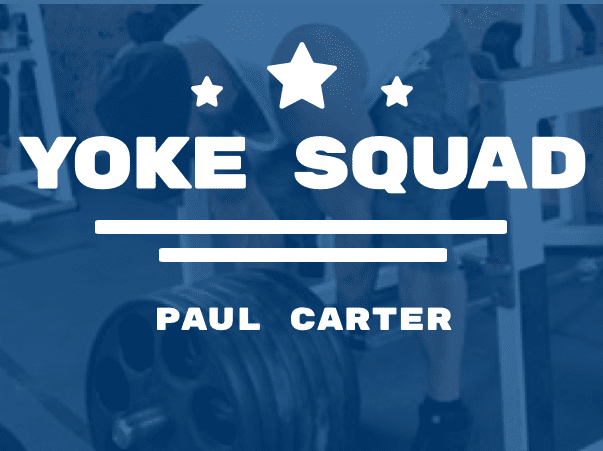Build Muscle With Paul Carter
Strength & ConditioningThe secret to muscle growth is mechanical tension. in this article Paul talk about how to build muscle mass.

Paul Carter
Paul Carter specializes in hypertrophy and body recomposition. He coaches pro bodybuilders and elite strength athletes, and works with some of the most respected minds in the strength and physique world. He has written a multitude of books on diet and training including the Maximum Muscle Bible, Base Building, and the XLR8 carb cycling approach to fat loss.
To connect further with Paul reach out at https://www.instagram.com/liftrunbang/
// The Secret To Building Muscle Is Mechanical Tension
“Volume is king for mass.”
If I had a dollar for every time I read or heard this phrase, I probably wouldn’t be writing this article right now. I’d most likely be talking about what color my next Ferrari is going to be.
But alas, I’m not talking about said red Ferrari and yet I still have to read this phrase from time to time, spouted off by people who either don’t know any better, heard it from someone else, or are flat out misinterpreting the data. Or maybe they do all three combined for the uninformed hypertrophy hat trick.
We absolutely know without question that the driving force behind all muscle growth is mechanical tension. This isn’t even up for debate.
This is fact.
Science.
Physics.
Math.
Without mechanical tension, all of the volume in the world will do very little to actually create the need for muscle remodeling to happen.
“But Paul, what the hell is mechanical tension?”
We’re going to approach this from a “what goes on inside the muscle” aspect, and then white belt it out from there.
Science Behind Muscle Mass

A muscle is made up of tens of thousands of muscle fibers.
When you train, you stimulate the individual fibers differently than the whole muscle itself. So it’s important to think about the fact that you’re really stimulating the individual fibers to grow.
And it is the increase in fiber size by way of an increase in protein content that causes a muscle to become larger.
Training To Failure
Assuming a muscle fiber is active, then what determines if it’s mechanically loaded is the contraction velocity. An involuntarily slow muscle contraction is going to produce a high degree of force, and mechanically load those active fibers.
The keywords here are “involuntarily slow”. This is important and can’t be bypassed or the whole thing goes right out the window. We’ll come back to this in a minute.
The second part of this to make training for muscle growth as effective as possible is that we want as many muscle fibers active during the set we’re performing. We want to mechanically load or fatigue them in order to kick-off growth signaling.
This is accomplished by activating as many high threshold motor units as possible.
Motor units control what muscle fibers are going to be active during a set. When you begin a set and can do a lot of repetitions than in the early part of that set, low threshold motor units are activated, which activate a small number of muscle fibers to be used to produce force to move the external load.
As those fibers fatigue, the body activates high threshold motor units that activate a lot of muscle fibers to continue producing force to move said load.
This is called the SIZE principle.
Where motor units are activated from smallest, to largest. This means a little bit of muscle fiber gets used, and then a lot of muscle fiber gets used.
The more motor units we can activate, the more muscle fibers that get activated as well. Once a fiber is active, it stays active throughout the set.
Once the active muscle fibers are thoroughly fatigued and cannot produce enough force to move the external load we hit failure.
Signal For Muscle Growth
This is how the signal for muscle growth gets kicked off, also known as mechanotransduction. When this happens, something called mTOR signaling starts, which controls and regulates muscle protein synthesis and bada-boom, the growth process is in place.
I could go on and on here, but the point I was trying to make is actually quite simple. In order to stimulate the muscle fibers to grow, you have to give them a reason (mechanical tension) to do so.
That “reason” exists around a high degree of effort in the sets you do (after your warm-up sets) that create a lot of intramuscular force, that loads the fibers, that kicks off the growth mechanism.
Call them “work sets” or “growth sets”. I don’t care what you name them, but they should differentiate themselves in terms of effort and exertion more than the other sets you’re performing in a training session.
You’re trying to get a muscle to grow. The mechanisms for growth starts with something as simple as a ‘high degree of effort”.
Without this mechanism, there can be no hypertrophy. It doesn’t matter how many sets you do. Hell, if the volume were the “king of driving hypertrophy” then marathon runners would have legs like Tom Platz.

Put In the Effort
Here’s the deal guys – things like sets, reps, frequency, etc are all just variables for you to play with. But without enough effort to cause a response that disrupts homeostasis there is no need for the body to adapt.
To add to this, over the course of a lifter’s lifetime, he/she is going to need different amounts of the variables mentioned above in order to continue seeing progress. There may be times where you need more sets or fewer sets. Or where you respond better to higher reps than lower reps.
There may be times where you need drop sets, cluster sets, and forced reps, and times where you need to leave a few reps in the tank.
What isn’t up for debate is that without training very hard, you’re not going to grow, and you’re not going to progress at all.
Trying to figure out the perfect number of days a week, and some perfect number of sets and reps to do is a complete waste of time if you’re not going to be training with enough effort to make that time in the gym actually matter.
Train With Brutality And Muscle Will Grow

In the next article we’re going to go over why progressive overload is tied in with this process, and then define what progressive overload is, and what it isn’t.
Want more from Paul Carter? Join Paul’s team, Yoke Squad on TrainHeroic
TRAIN WITH
PAUL CARTER
Yoke Squad is all about getting as jacked as possible, as fast as possible, in the most efficient way possible.
We’ll focus on proper bio-mechanics to target the specific tissue you’re looking to grow and help you understand how to perform the movements in a way that fits your individual structure.
This means understanding what it means to train with enough effort to stimulate real, meaningful muscle growth.
We’ll leverage things like tempo and intensity techniques to drive that stimulus while you’re at home, and give the muscle no other option but to adapt and grow.
The synergy of these components is what makes this programming so incredibly effective for hypertrophy.
Expect a combination of single and multi-joint movements performed with efficiency. Expect to work harder than you ever expected you could. Expect results to come faster than you ever though possible.
READY TO TRY TRAINHEROIC?
Our powerful platform connects coaches and athletes from across the world. Whether you are a coach or trainer looking to provide a better experience for your clients, or you’re an athlete looking for expert programming, click below to get started.
Want more training content?
More coaches and athletes than ever are reading the TrainHeroic blog, and it’s our mission to support them with the best training & coaching content. If you found this article useful, please take a moment to share it on social media, engage with the author, and link to this article on your own blog or any forums you post on.
Be Your Best,
TrainHeroic Content Team
HEROIC SOCIAL
HEROIC SOCIAL
TRAINING LAB
Access the latest articles, reviews, and case studies from the top strength and conditioning minds in the TH Training Lab


